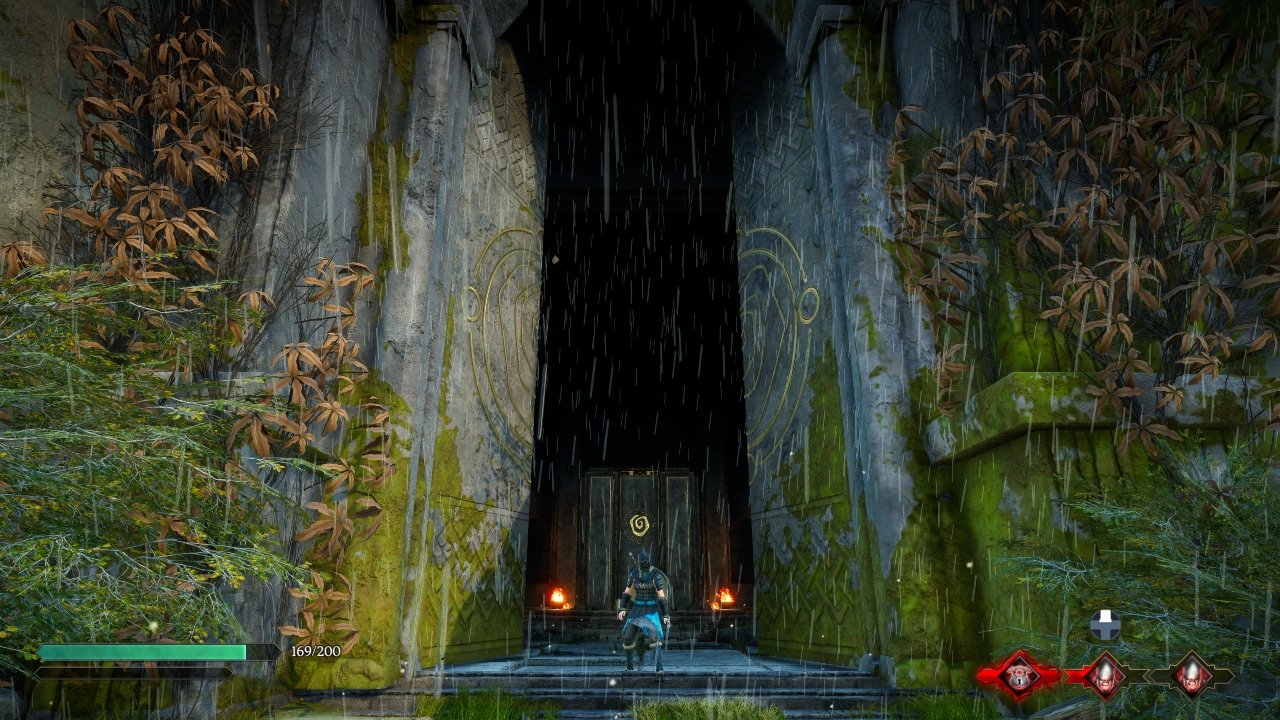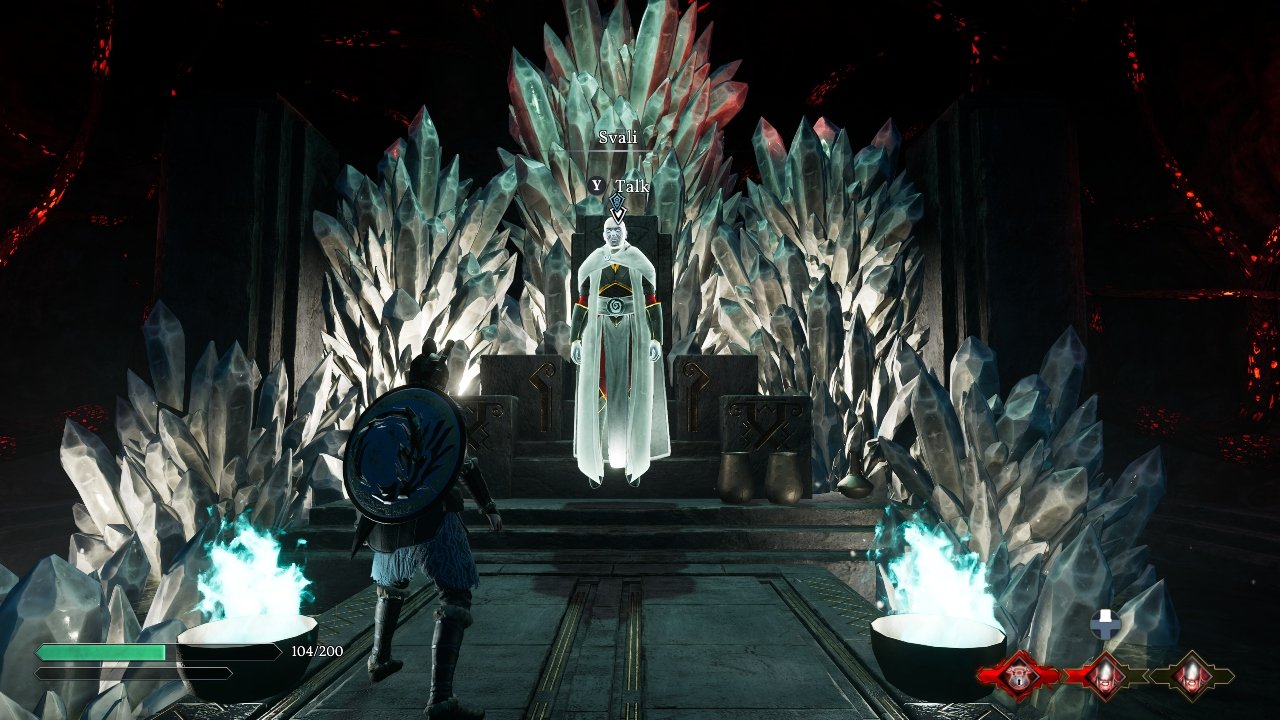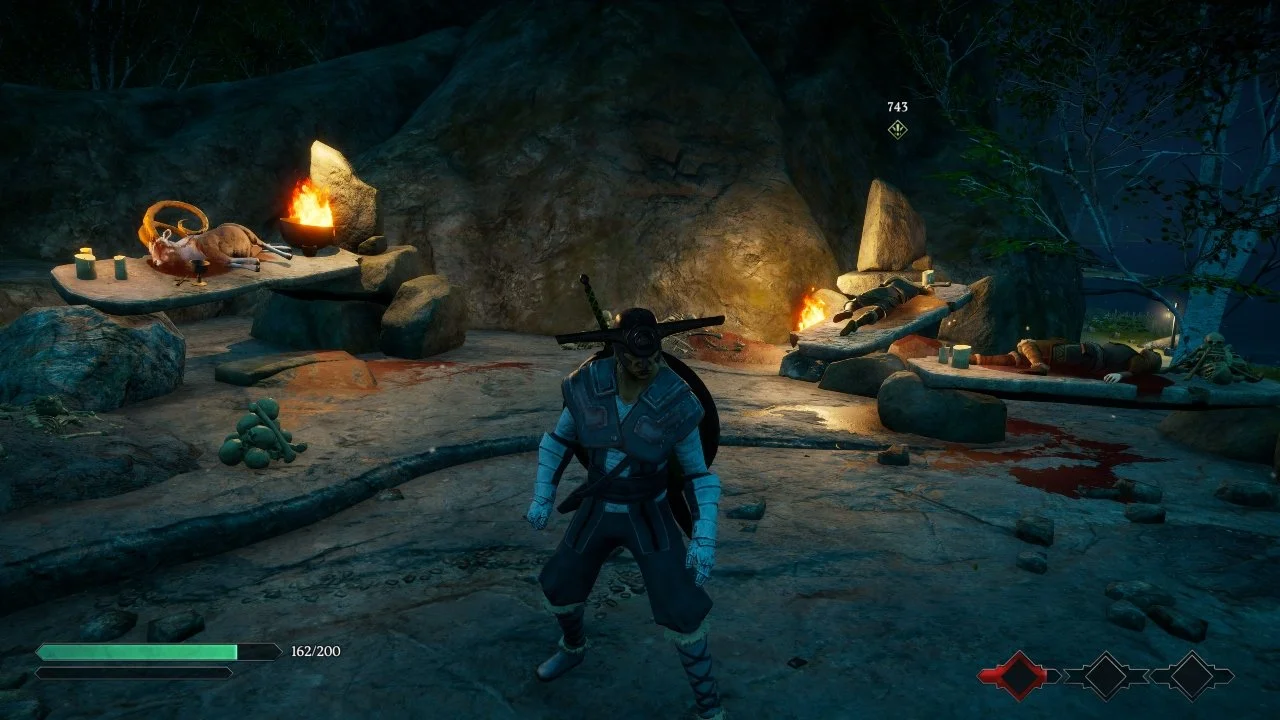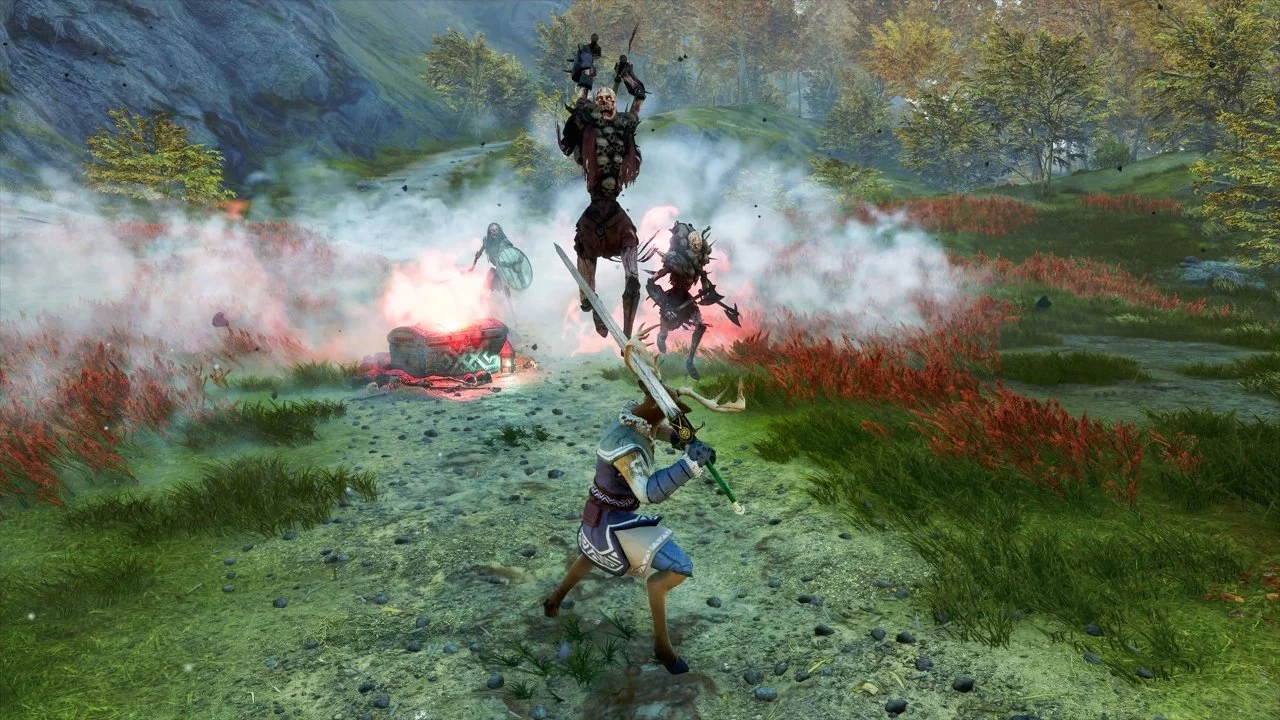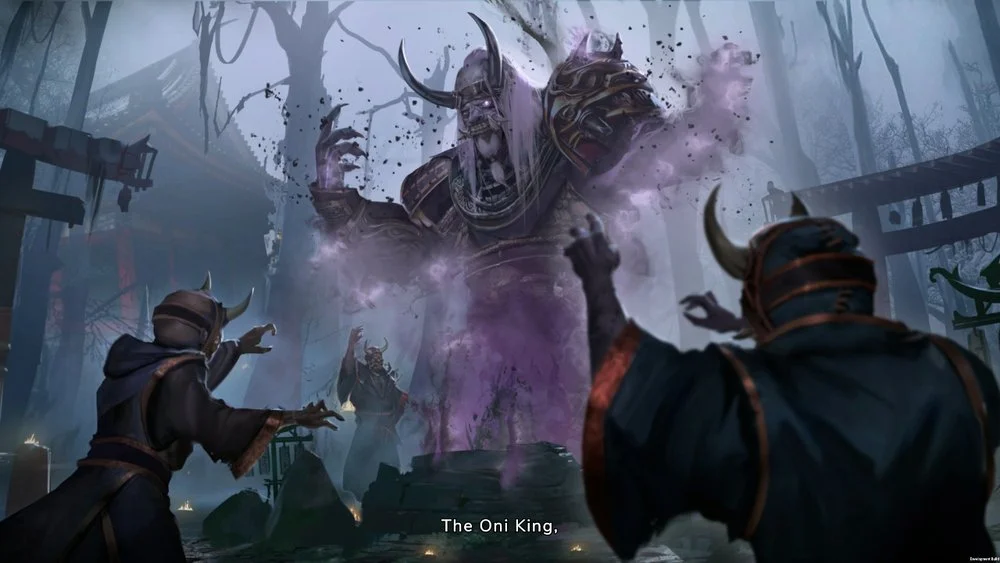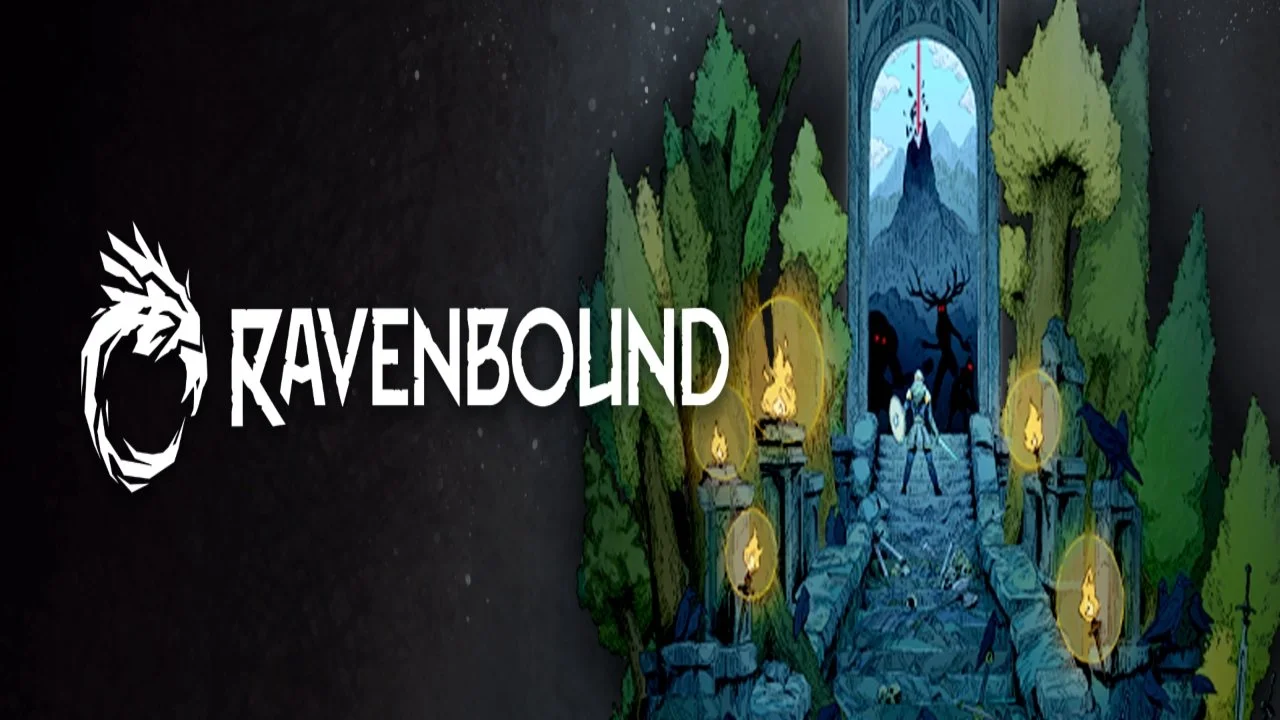Ravenbound is the new hack-and-slash action roguelite from Systemic Reaction and Avalanche Studios. Ravenbound prides itself as a fast-paced action-filled dive into the majestic, Scandinavian folklore-inspired island of Ávalt. Ravenbound isn’t Systemic Reaction’s first game but it is definitely its most ambitious entry. Uniquely for a roguelite, Ravenbound is set in a massive open-world map where players will fly and run across the different biomes of Ávalt to complete each run. Unlike most roguelikes and lites Ravenbound’s map is not procedurally generated, but the enemy encounters and items still are.
Story
The story of Ravenbound is very central to its gameplay and the influence of Scandinavian folklore permeates the game. Now as a reminder Nordic and Scandinavian folklore doesn’t mean Thor, Odin, Asgardian Gods, and the Aesir faith; it does mean Trolls, Draugr, Huldras (think Norse dryads), and more.
In Ravenbound you become the Vessel of the Raven, an eternal weapon forged by imprisoned Gods. Each time a Vessel dies it gives Power to the Raven in its quest to free the Gods and restore order to the island of Ávalt. the ultimate goal of Ravenbound is to defeat the various wardens that guard the Tombs of the Ellri, receive their blessings, and continue to defeat the Betrayer God of the Ellri.
To gain power the Betrayer has dispersed Tears of Hatred across Ávalt corrupting any who absorb them and everything in the land by proxy. To defeat the Betrayer the player must cleanse the Tears of Hatred and free the Ellri, but beware, for every bit of power you gain increases your own Hatred and the strength of your enemies until the Ellri cleanse the buildup of Hatred after you free one.
The detail of the world of Ravenbound is incredible and lush, and simply dripping with oodles of fun hidden bits of lore and folklore throughout the massive open world map. The backdrop of Scandinavian folklore is lovely and fairly unique as games go. A lot of the world’s story is hidden in small hidden areas of the map just waiting for players to explore.
Gameplay
As always gameplay is where roguelites like Ravenbound really shine. The general gameplay loop of Ravenbound should be familiar to anyone familiar with the genre. For each run, you start off with three different ‘Vessels’ to choose from, all of which come with a randomized trait, race, and weapon, from your pool of unlocked selections. There are three different playable races each with their own unique ability, Humans can destroy item cards (we’ll get to that) for money, Simlar (deer people) can destroy item cards for mana, and Ulvar (cat people) can destroy item cards to upgrade their weapon damage. There are at least 12 different available traits that range from boosted crit chance after dodging to an increased base armor stat. After your race, the biggest impact on your run will be your weapon selection, the weapon trait doesn’t decide your weapon but decides what type of weapons you can find in the world, I.E.: twin swords vs. a great axe. Weapon type changes how fast you swing, how far you reach, and how easily you stagger enemies, and changes the entire movements of combat.
Once you’re in-game you are presented with two quest objectives, flying in your raven form to either the starting region's village or cleansing the region's Tear of Hatred. I highly recommend starting with the Tear of Hatred. After you defeat the boss guarding the Tear of Hatred it brakes, rewarding you with mana. Mana is used to ‘play’ cards to add to your build. You gain cards by collecting fragments from enemies you defeat around the map, 3 fragments equal a draw of one card from a choice of three. Fragments from different types of enemies have different pools of cards that they draw from themed around the elements of Sky, Earth, Ice, Fire, and Spirit. For example, Trolls are ice and have a lot of cards themed around defense and freezing enemies, whereas Tuftir (goblins) are fire and have cards themed around damage and burning enemies. Cards that you gain can be weapons, armor, or relics that give you various buffs.
But beware, mana is hard to come by, and every time you combine three fragments you gain some hatred. Once your hatred reaches tier 1, you only need to combine 2 fragments but one of the card options is gone, and instead, the Hatred card that replaces it increases boss and elite enemy health and damage by 5%. At tier 2 of hatred, it's two cards so a 10% increase to both, and at tier 3 you can’t get new cards or pick up fragments. Aside from natural hatred gain, there are chests hidden throughout the map as well as one per enemy camp. These chests are corrupted by Fragments of Hatred that if you want the chest's contents you must absorb. A Fragment of Hatred takes up a fragment slot and upon combining fragments reveals a Hatred card just like a tier 1 of hatred. However, after you clear a Tear of Hatred the 4-5 surrounding camps near the Tear will be cleansed of Hatred, allowing you to get the chest reward without gaining hatred. Chests can contain mana, gold, and chances to pull cards you’ve previously used, and are necessary for progression.
Each region has a town where you can use gold to purchase cards, heal, unlock relic slots, and find a quest that will reward gold. After you visit the town and cleanse the Tear of Hatred in a region, next up is traveling to that region's Tomb and facing the guardian. After you beat the guardian the Ellri will cleanse your hatred levels and heal you for the next region, where you repeat the process of the first. After you clear three regions you can face the Betrayer God or go on to a new region. There are five regions in total, one for each of the elements in the game. After a region is unlocked, they can be completed in any order during a run.
The biggest part of any roguelite is the combat and Ravenbound centers itself around fast-paced hack-and-slash gameplay. Combat is all about making excellent use of doges and blocks to avoid damage and gain buffs. Perfect dodges will give you a temporary frenzy, boosted attack speed and damage, and perfect blocks will stagger enemies and grant temporary invulnerability. Making those perfect blocks and dodges will make or break a run, and forget about playing if you aren’t one for that twitch reaction time or memorizing enemy movements.
What Ravenbound shapes up as in terms of gameplay is a challenging journey that doesn’t explain how to win to its players and relies on them to figure out what their optimum strategy is on their own.
Audio and Visual
Visually, Ravenbound is a beautiful experience, the 3D open world has been rendered beautifully with quality graphics across the board. There are however fairly common graphical glitches throughout the game. Fortunately, the glitches rarely affect gameplay, but they can be distracting. From my experience, a surefire way to make the game glitch was to alt-tab, so I highly recommend avoiding tabbing out of the game while playing. Aside from tabbing out, the graphical glitches weren’t too bad, and nothing game-breaking. The UI is clean, simple, and easy to use, although the start menu before a run can be a bit laggy or jumpy when swapping tabs. What I can’t emphasize enough are the beautiful visuals that players can witness while flying over Ávalt in Raven form or just simply exploring it on two feet.
In regards to audio quality, there is nothing distinctly memorable. There is a notable lack of fight music, though that may be a design choice to allow ease of focus for players. Outside of combat the game's music is heavily influenced by the Scandinavian folklore theme and is rather pleasant to listen to. Sound effects are nothing to write home about, but they work effectively to emphasize moments of combat for the player and are well executed.
Replayability
The ever-present replayability of roguelites is not missing from Ravenbound. Theoretically, Ravenbound’s replayability is only limited by your own enjoyment of the game. Each run is a new experience, and usually only getting tired of the combat will drive players away from a roguelite. I will say however that Ravenbound makes that easier than other roguelites. In Ravenbound combat can get repetitive quickly for those that are not absolutely in love with the hack-and-slash gameplay. Unlike other roguelites, there is not a wide variety of combat playstyles available, it is only hack-and-slash the variability comes from how you go about your hacking and slashing. Do you want a crit build, a bleed build, a block build, a dodge build, a status effect build, or another type? There are no cool active items or awesome effects, just which type of passive effects you want. The biggest change from run to run is the weapon you choose, which is mostly just a change in the pace of combat depending on the weapons varying speed and strength of swings.
What It Could Have Done Better
Ravenbound is an incredible journey but there are a lot of issues that I have with it. First of all, there is a fair bit of work to do to fix all the graphical issues and bugs that pop up, it sometimes feels like Systemic Revolution's eyes were a bit too big for its stomach when they decided they wanted a huge open world roguelite on a beautiful 3D map that players could fly over or run across. Mechanically the game usually works fine, but as of the pre-release copy, it is a bit too easy to come across graphical glitches.
My second issue with Ravenbound is more of a personal one, based on how the game is designed for first-time play. Ravenbound is very unforgiving for new players who know nothing about the game, collecting too much hatred is very easy if you don’t know what you’re supposed to be doing, and figuring out the intended gameplay loop without a guide is difficult but this would probably be solved by a simple google once the game is released. As I said it’s more a personal gripe and not necessarily a fault with the game, either way, I blame the ‘dark souls effect’.
My third and biggest issue with Ravenbound is the combat system. As a roguelite, Ravenbound is fine, there’s plenty of diversity in build style for players to find and experience. The problem is that all the builds play very similarly when it comes down to it. No matter what build path you decide on, combat is always going to be about landing those perfect dodges and blocks. There is nothing else extra that you can do, combat is always slash, block, dodge, repeat. This may not be an issue for the hack-and-slash fans out there, but for me, it feels like there’s a little too much hack-and-slash in my roguelite.
Verdict
Ravenbound is an incredible hack-and-slash adventure through Scandinavian folklore that will challenge and delight fans of roguelites and hack-and-slash games, but it does have its drawbacks. Ravenbound is very much a game for gamers who enjoy a challenge. If that is something that you’re looking for dive into Ravenbound headfirst and enjoy, but for me, it felt as if Ravenbound got a bit too lost n being purposefully challenging. Yes, a roguelite needs to have a difficulty curve the more you progress, but Ravenbound sometimes felt a little too steep. Despite my misgivings and annoyances, which very much might just be due to my middling skill with hack-and-slashers, I did enjoy most of my adventure in Ravenbound. The vistas you come across are breathtaking, and the detail paid to out-of-the-way areas is incredible.
Despite being a roguelite Ravenbound‘s story is no slouch, and the ever-present feel of flying through a Scandinavian folktale full of adventure and danger at every turn is enthralling. I expect Ravenbound to become the go-to example of how to make a 3D roguelite in the future. For $30, I highly recommend Ravenbound to anyone who enjoys hack-and-slash games, while for fans of roguelikes and lites unsure of how much they would enjoy a hack-and-slash game, I would advise checking out some playthroughs of Ravenbound on Youtube. Overall, I would say adventuring through Ávalt in Ravenbound was a positive experience and I can’t wait to see how Ravenbound will evolve in the future.
Ravenbound is available on PC via Steam now.
